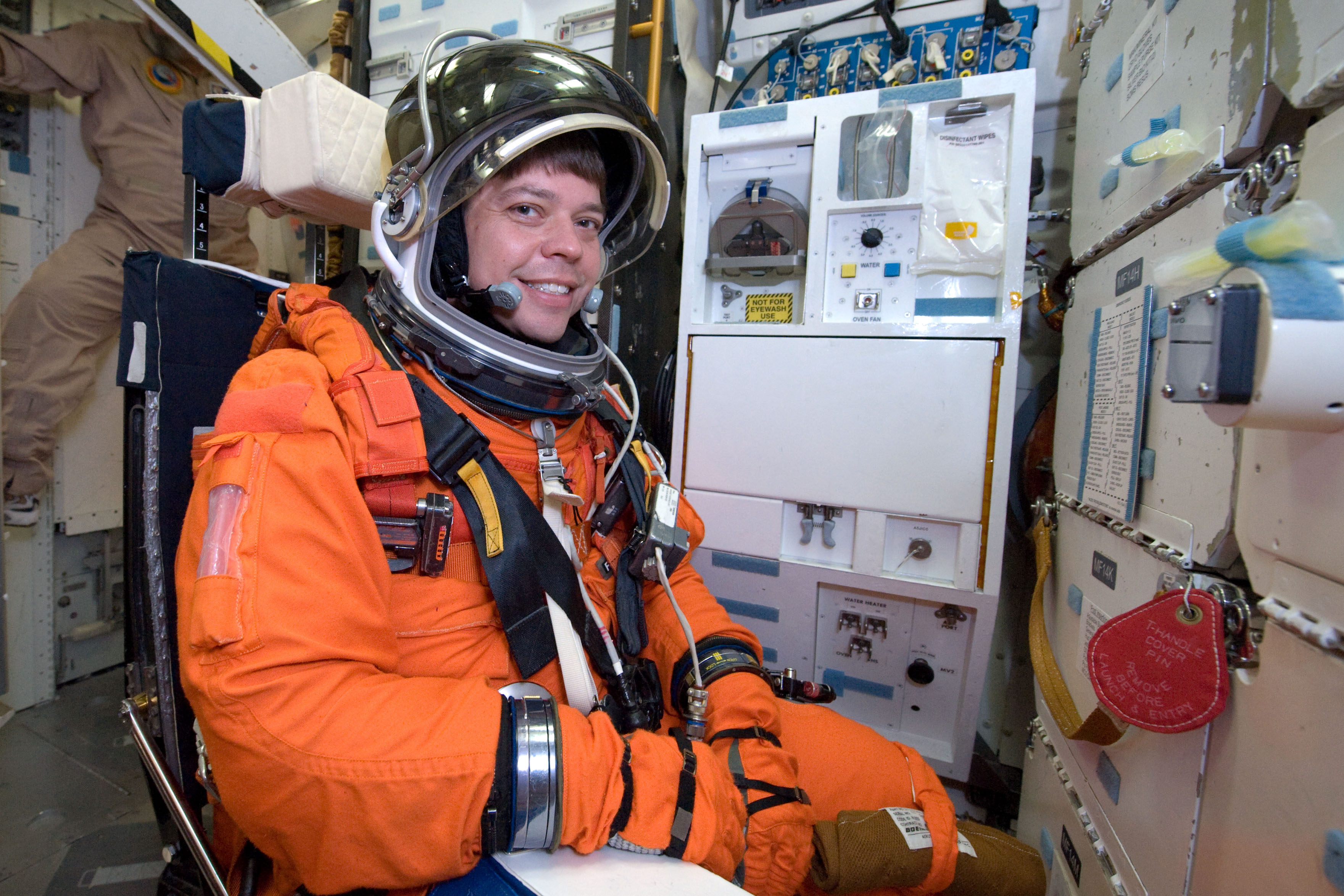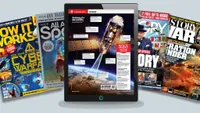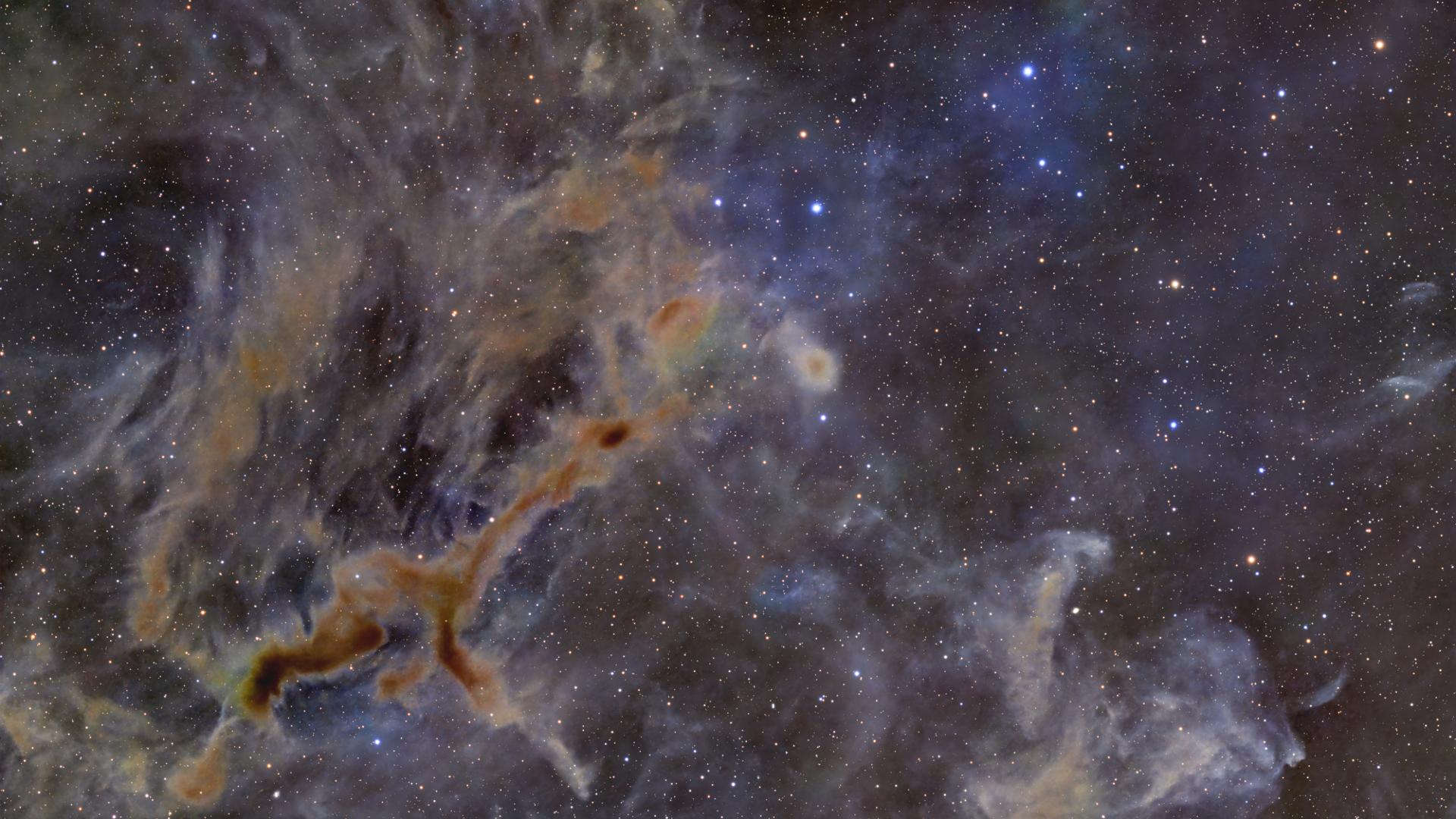How SpaceX's sleek spacesuit changes astronaut fashion from the space shuttle era
A new breed of spaceship requires a new breed of spacesuits.
For the first time since the space shuttle era a decade ago, American astronauts are expected to fly to space aboard the SpaceX Crew Dragon spacecraft May 27, marking the first commercial crew flight for NASA and the first time astronauts will launch from American soil in nearly a decade.
Long-time space watchers will notice one thing different about the spiffy spacesuits that Crew-1 astronauts Bob Behnken and Doug Hurley will wear: they are not the orange "pumpkin" flight suits astronauts used to wear during the launch phase of shuttle flights managed by NASA.
Video: SpaceX spacesuits are a new breed
Related: The evolution of the spacesuit in pictures

NASA astronauts Bob Behnken (left) and Doug Hurley, wearing SpaceX spacesuits, walk through the Crew Access Arm connecting the launch tower to the SpaceX Crew Dragon spacecraft during a dress rehearsal at NASA’s Kennedy Space Center in Florida on Jan. 17, 2020.
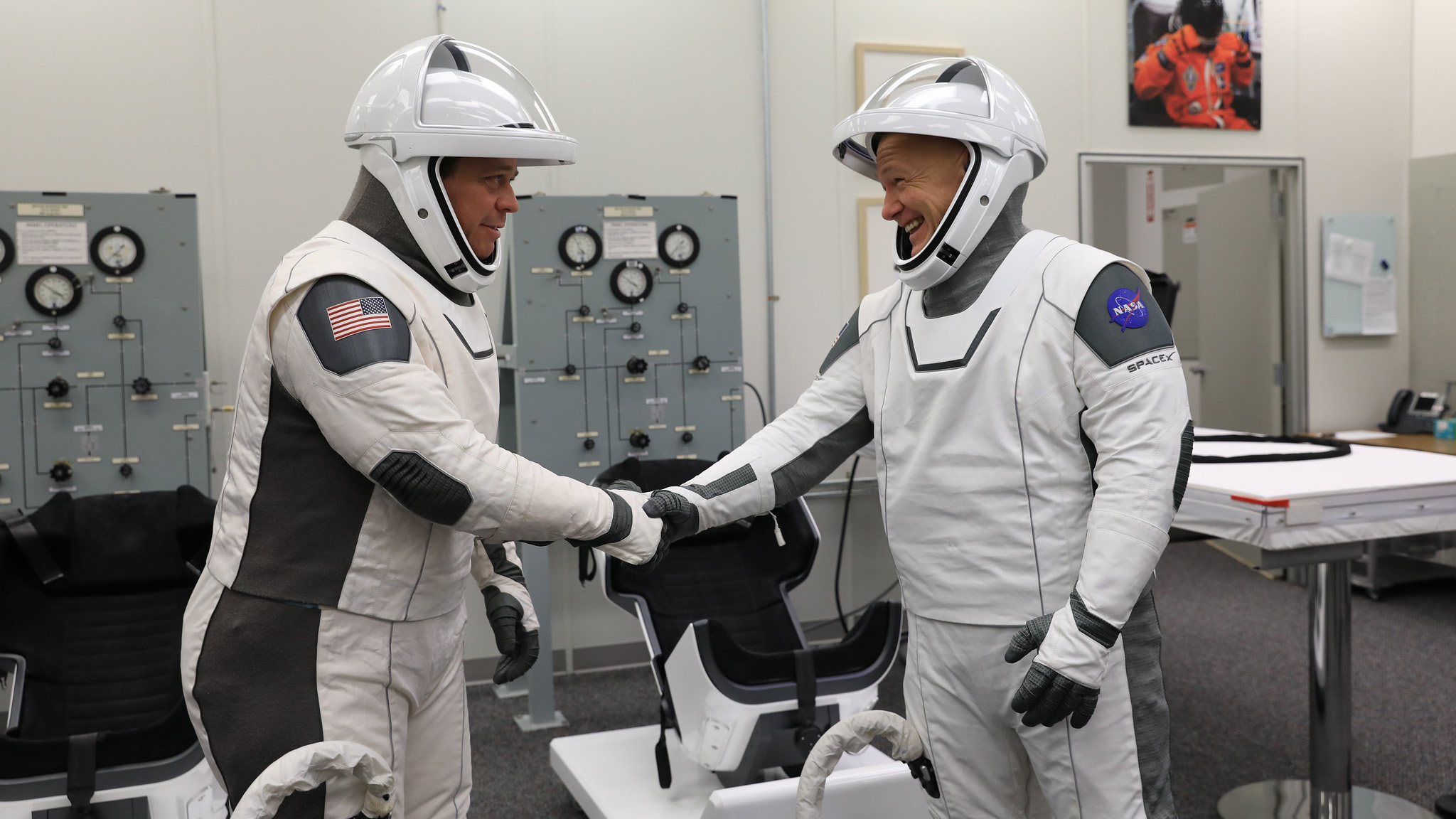
NASA astronauts Bob Behnken, left, and Doug Hurley shake hands after suiting up in SpaceX spacesuits in the Astronaut Crew Quarters at Kennedy Space Center in Florida on Jan. 17, 2020, during a dress rehearsal ahead of the company’s uncrewed In-Flight Abort Test.
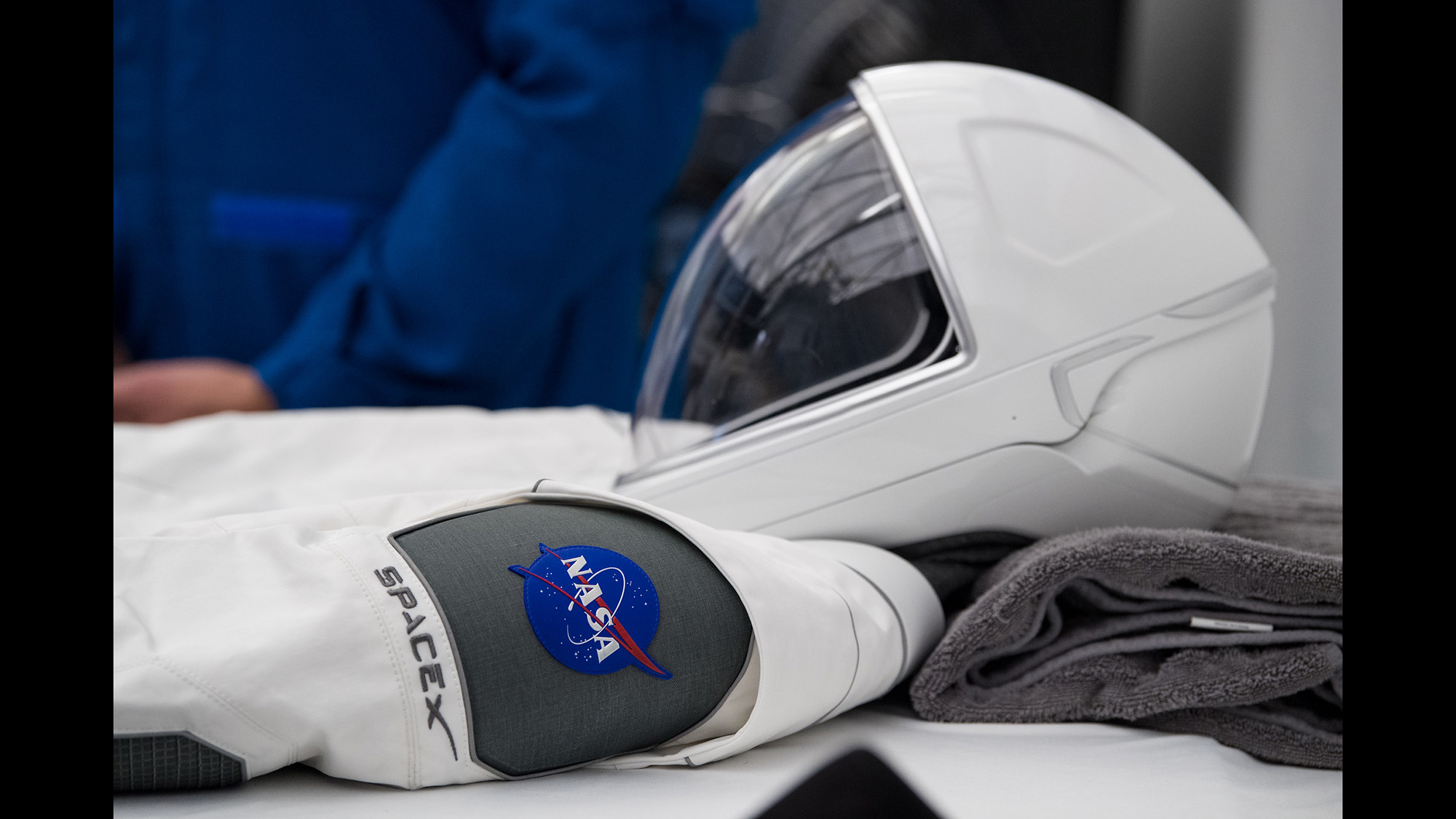
A view of one of the SpaceX suits that will be used for the Demo-2 launch at the SpaceX Headquarters, Thursday, Oct. 10, 2019 in Hawthorne, California.
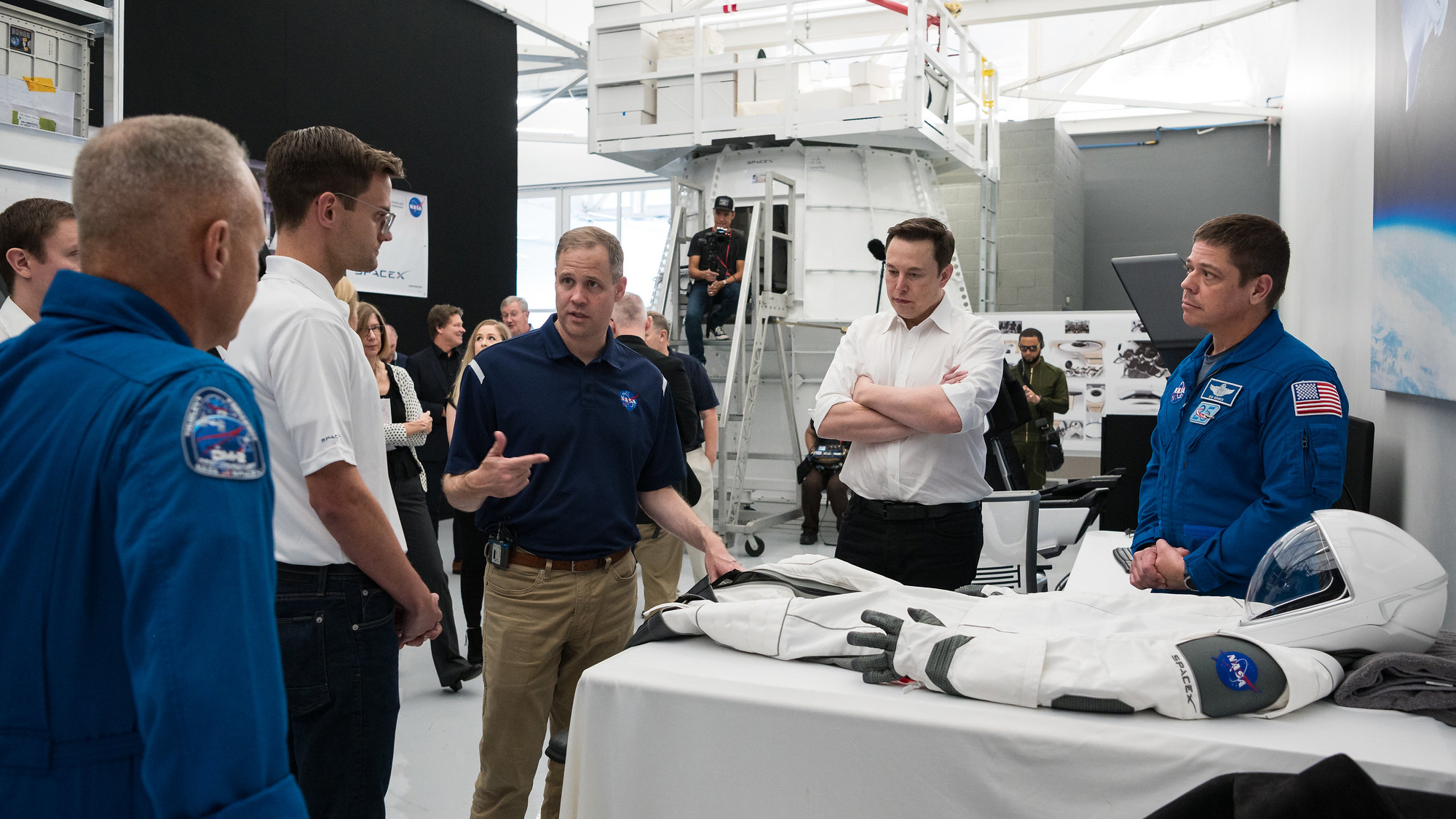
SpaceX Chief Engineer Elon Musk and NASA astronaut Bob Behnken look on as NASA Administrator Jim Bridenstine speaks to NASA astronaut Doug Hurley, as they look at an identical version of the SpaceX spacesuit that he will wear for the Demo-2 mission during a visit to SpaceX Headquarters on Oct. 10, 2019, in Hawthorne, California.
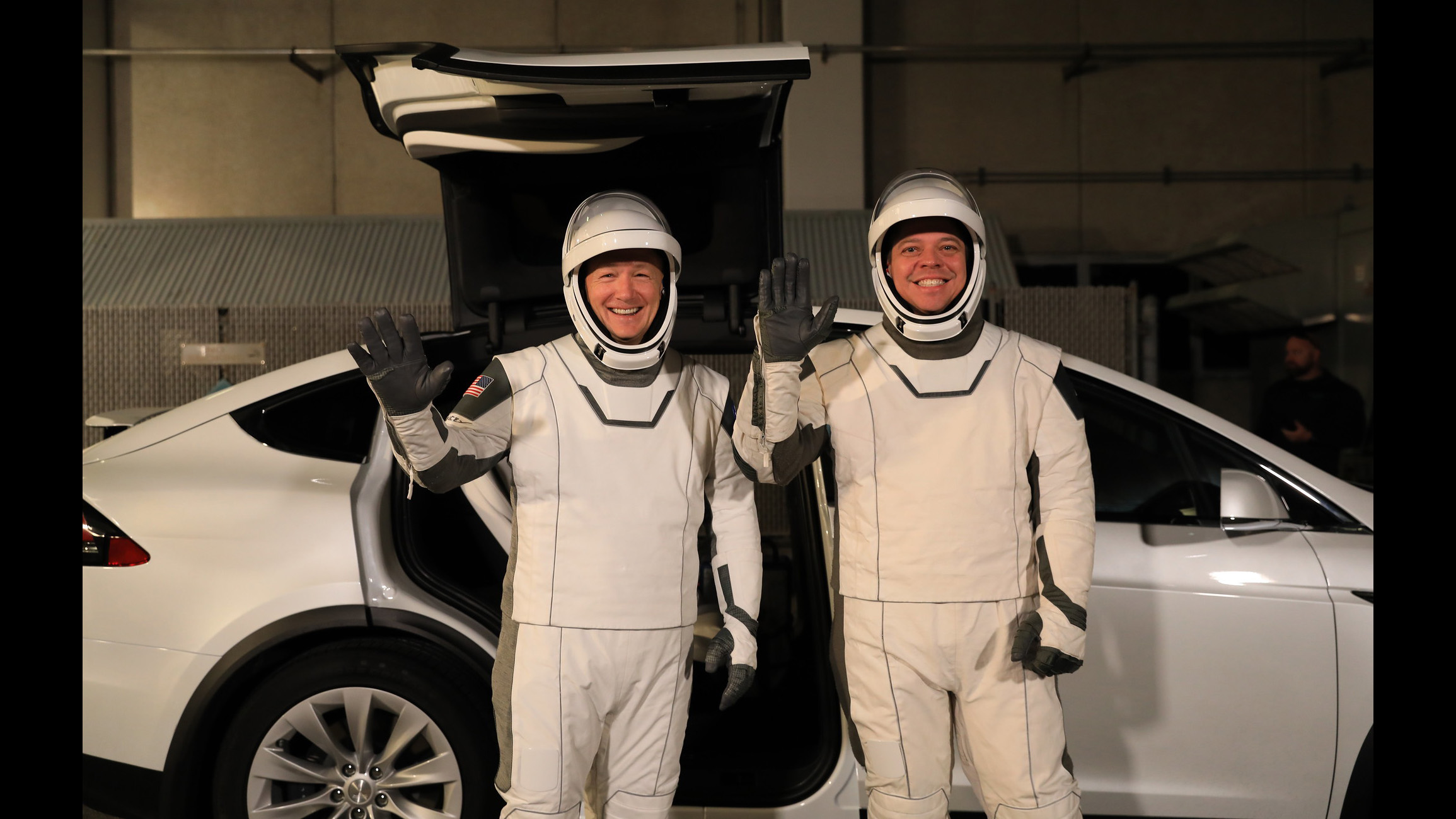
Donning their SpaceX spacesuits, NASA astronauts Doug Hurley (left) and Bob Behnken wave after walking out of the Neil A. Armstrong Operations and Checkout Building at Kennedy Space Center in Florida on Jan. 17, 2020, during a dress rehearsal ahead of the SpaceX uncrewed In-Flight Abort Test.

On March 19-20, SpaceX and NASA executed a full simulation of launch and docking of the Crew Dragon spacecraft, with NASA astronauts Bob Behnken (left) and Doug Hurley participating in SpaceX's flight simulator.

A closeup view of the sleeve of Doug Hurley's spacesuit.

A closeup view of the sleeve of Bob Behnken's spacesuit.
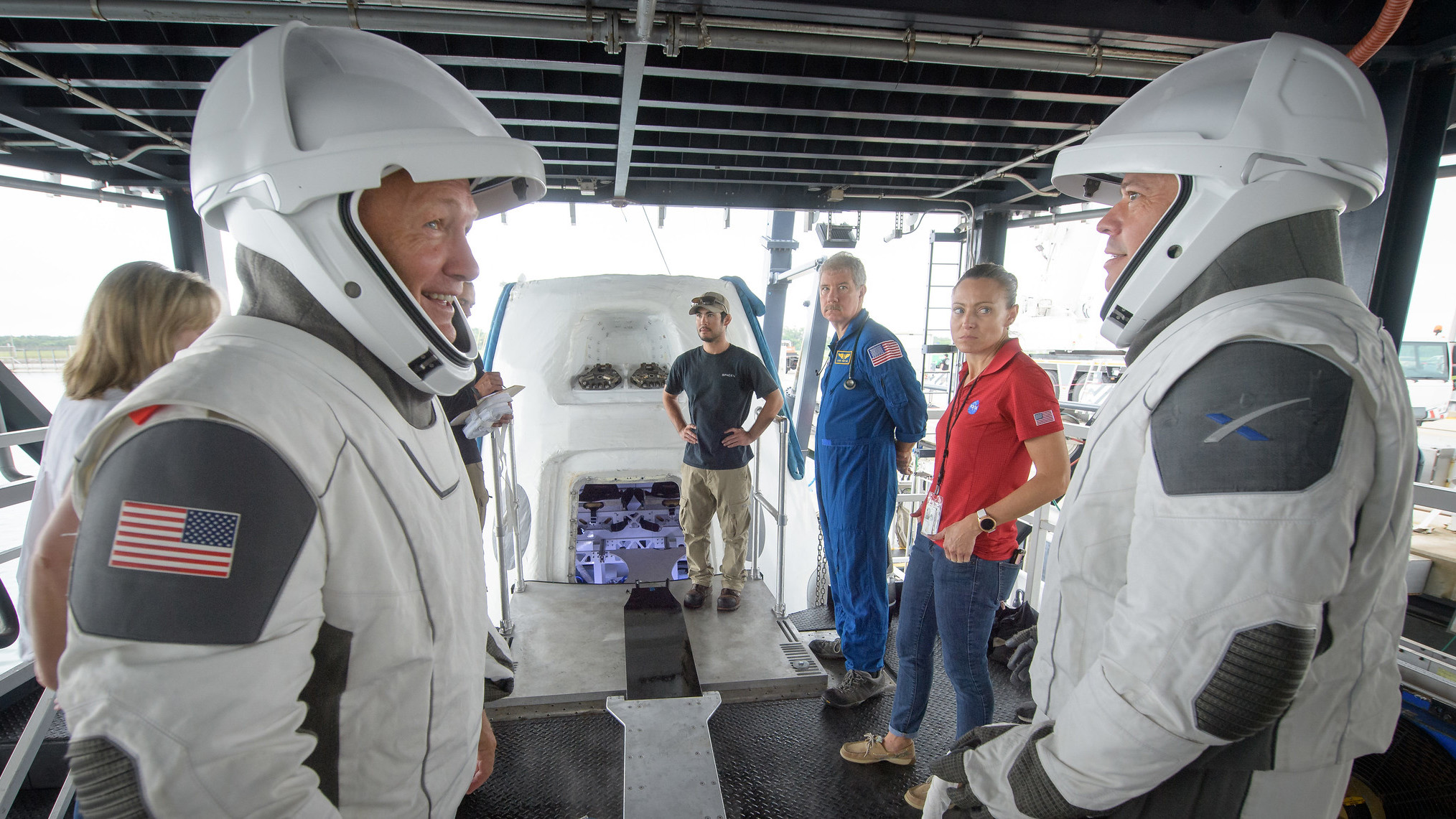
NASA astronauts Doug Hurley (left) and Bob Behnken work with teams from NASA and SpaceX to rehearse crew extraction from SpaceX’s Crew Dragon on Aug. 13, 2019, at the Trident Basin in Cape Canaveral, Florida.
The SpaceX spacesuits are a cool, one-piece white design, and much sleeker than the bulky space shuttle launch suits, which were also known as the Advanced Crew Escape Suit (ACES). So slim was the new SpaceX spacesuit design that in 2018, the company's founder Elon Musk had to reassure concerned Instagram followers after the reveal: "It definitely works. You can just jump in a vacuum chamber with it, and it's fine."
The astronauts flying on the first crewed test flight of SpaceX's Crew Dragon have also commented on differences with the SpaceX suit, compared to other spacesuits astronauts have used in different years.
"This [SpaceX] suit is significantly different than the suit we wore on shuttle," Hurley, a veteran of space shuttle flights STS-129 and STS-135, said during a preflight press conference May 1, without going into much detail. He alluded to some differences to the Sokol suit the Russians use for spaceflight, but added he "never actually went through the entire suit-up process" since the Sokol was used as a backup if something went wrong during his brief mission to the International Space Station (ISS).
Breaking space news, the latest updates on rocket launches, skywatching events and more!
But even though the SpaceX suit is newer, it will go through the same preflight checks as the pumpkin suit and the Sokol suit. "It's similar in that they check the suits for leaks, they check the comm system, and they just want to make sure everything is good to go before you head out to the pad," Hurley said.
Subsequently, two of these SpaceX spacesuits proved their worth in space, before being used by humans. One flew with the Tesla-driving dummy that launched on a Falcon Heavy rocket in 2018, and another was used on the dummy Ripley that flew aboard the uncrewed SpaceX Crew Dragon Demo-1 test flight to the ISS in 2019.
If it looks like the spacesuit is built for a movie set, that could be because the suit designer is legendary Hollywood costume designer Jose Fernandez, who is known for costumes in blockbusters such as "Wonder Woman," "Wolverine," "Batman vs. Superman" and "Captain America: Civil War."
"What we're doing on the on SpaceX side … is to kind of reach back and kind of pull forward, maybe, a retro styling or a different way of creating their own unique kind of mission symbol or symbology rather than trying to copy what was done on the space shuttle side," said Behnken, a veteran of space shuttle flights STS-123 and STS-130, in a pre-flight video interview May 4 on NASA's YouTube channel.
Behnken added that the pumpkin suit was an iconic part of space shuttle launches, and he expects the same will happen soon for the SpaceX spacesuit. "Both of [the suits] have succeeded, I think, in terms of becoming iconic in terms of symbolizing the mission in front of us, and the excitement associated with what we're going to accomplish."
On the training side, Behnken said in a separate preflight video interview May 2, the SpaceX spacesuit has at least one big advantage: "a high enough fidelity, from a training perspective, that we can — both Doug and I — can sit in a capsule, we can put on suits and we can go through a situation or a scenario where the suits are going to inflate."
Behnken said it is important for astronauts to witness that kind of experience in training, to prepare for the rigors of spaceflight. "Getting that level of fidelity of training hardware, versus PowerPoints and virtual presentations of it [the suit], is really important from an operator's perspective. So that's a huge win. The SpaceX team stepped up to that, and we really appreciate it."
SpaceX has kept some design features of its spacesuits private, but it has emphasized the suits are meant to be symbiotic with the large computer panels that astronauts will use to monitor Dragon systems and navigate to the International Space Station. Each suit is custom made for the astronaut, according to NASA.
SpaceX's spacesuit "is designed to be functional, lightweight, and to offer protection from potential depressurization," NASA added. The protection against depressurization would be similar to the ACES suit, which had an emergency breathing system and the ability to fully pressurize if the cabin suddenly lost oxygen.
"A single connection point on the suit's thigh attaches life support systems, including air and power connections," the agency said. "The helmet is custom manufactured using 3D-printing technology and includes integrated valves, mechanisms for visor retraction and locking, and microphones within the helmet's structure."
Don't count on SpaceX's suit for spacewalks, however. For the foreseeable future, astronauts will continue to use the shuttle-era Extravehicular Mobility Unit (EMU), which is designed to work for 8-10 hours or so for microgravity activities in a full vacuum, while providing protection against radiation.
NASA is working on more advanced spacesuits optimized for the lunar surface for the agency's forthcoming Artemis program that aims to land astronauts on the moon by 2024. If all goes to plan, the agency will test those moon spacesuits aboard ISS in 2023.
SpaceX's suits are also distinct from those that astronauts will use for the other Commercial Crew vehicle, Boeing's Starliner. Tests are ongoing to prepare that vehicle for human flights, and the astronauts flying missions will don a blue spacesuit with features such as touchscreen-sensitive gloves, and more advanced materials. You can read more about Starliner's spacesuit on NASA's website.
- In photos: SpaceX's historic Demo-2 test flight with astronauts
- Commercial crew astronauts prepare for launch — what will they wear?
- Spacesuit suite: The evolution of cosmic clothes (infographic)
Follow Elizabeth Howell on Twitter @howellspace. Follow us on Twitter @Spacedotcom and on Facebook.
OFFER: Save 45% on 'All About Space' 'How it Works' and 'All About History'!
For a limited time, you can take out a digital subscription to any of our best-selling science magazines for just $2.38 per month, or 45% off the standard price for the first three months.

Elizabeth Howell (she/her), Ph.D., was a staff writer in the spaceflight channel between 2022 and 2024 specializing in Canadian space news. She was contributing writer for Space.com for 10 years from 2012 to 2024. Elizabeth's reporting includes multiple exclusives with the White House, leading world coverage about a lost-and-found space tomato on the International Space Station, witnessing five human spaceflight launches on two continents, flying parabolic, working inside a spacesuit, and participating in a simulated Mars mission. Her latest book, "Why Am I Taller?" (ECW Press, 2022) is co-written with astronaut Dave Williams.
